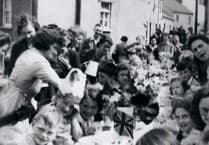MORE often Shaun Newman makes, or repairs, guitars, violins, and all sorts of other stringed instruments.
This time the Crediton luthier has made one for himself, based on one first made in France around 1560 which originally had nine strings, and is in the Baroque style.
Shaun has supplied players with their instruments as far afield as China and recently made one for a London-based player to fit into an overhead locker on an aeroplane.
This baroque style guitar is very different from any others he has made.
He explained: "The origin of this Baroque guitar is probably the vihuela and it is very different from the modern six-string guitar.
"This instrument originally had nine strings on five courses, (a ‘course’ is either a pair of strings or a single one). The first four courses would have been double, and the fifth single, but the maker would always fit 10 tuning pegs because it would otherwise not look symmetrical. That is how this tradition grew up," said Shaun.
"I wanted to be able to play this either as a Baroque or a modern classical instrument, so I have drilled the bridge so that you can have the nine strings or just six.
"Even these six strings put about 80lbs of pressure on the bridge. I once made a dulcimer with 69 steel strings. It was big and had three tons of pressure across its bridge.
"Even though I have modified it a bit, it has many authentic features such as the elegant ’mustachios’ at the bridge ends and the decorative soundhole rose made entirely by hand in calfskin vellum.
"I even had to make many of the micro chisels and punches to create the rose," he said.
"There is only one company in England who make this vellum. They have traditionally supplied the Houses of Parliament with vellum for copies of UK laws.
"Not many people know how to make a vellum rose any more. The calfskin is like a thin but stiffish cardboard and apparently has a life expectancy of up to 500 years.
"The mustachios are made of ebony carved, the back is inlaid with ebony, the neck is mahogany, the back and sides are German maple, the front is spruce which is all traditional and the pegs are ebony.
"The head stock is inlaid with ebony, tulip wood and walnut, the finger board is ebony with a sycamore beading of 0.5 mm thick and all inlays on the back and edges are ebony and sycamore," Shaun explained.
He said he had based this guitar on one from about 1560 that he found in a book. They had been much in use in France and Italy. Shaun added: “It is really more like a vihuela than a guitar which is 15th and 16th century, and has a lot of Moorish influence."
It is something that he is keeping for his own use and enjoyment so it is not going anywhere except his home at Crediton.




